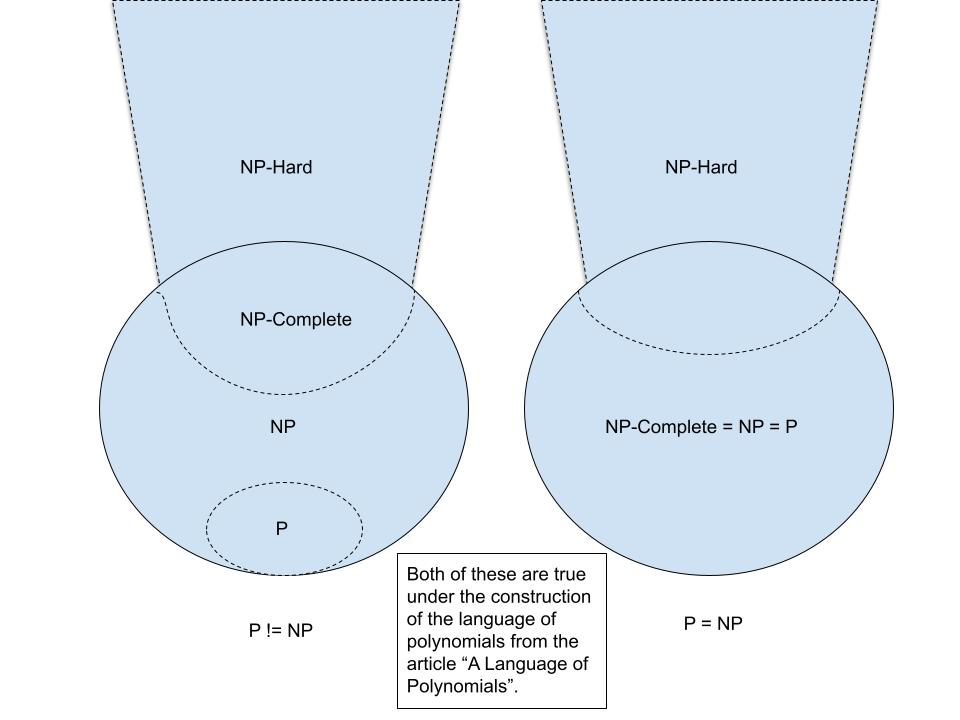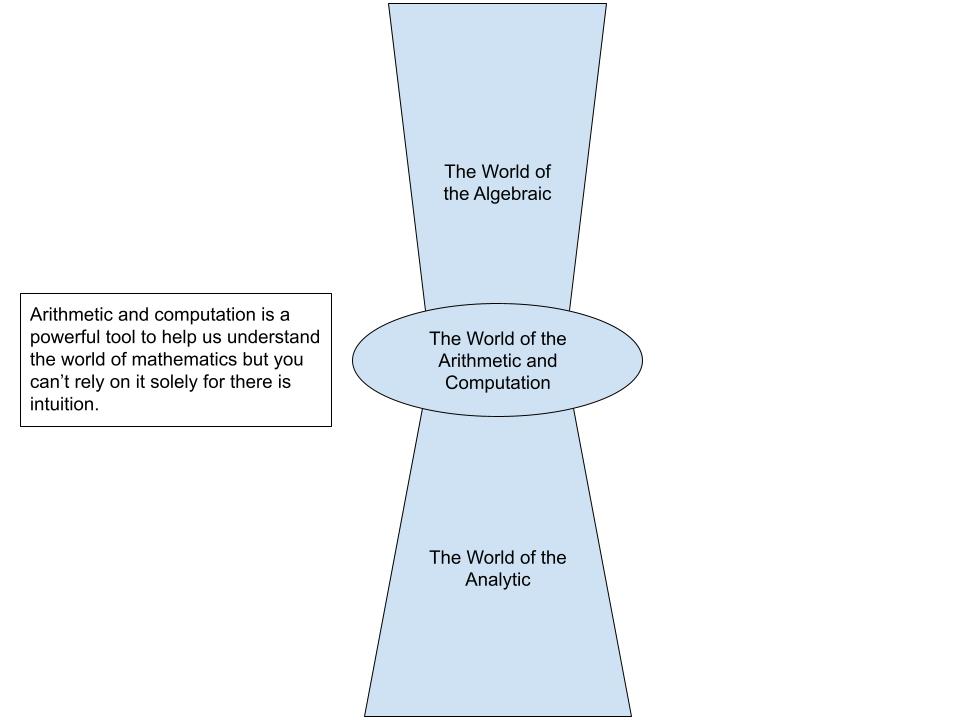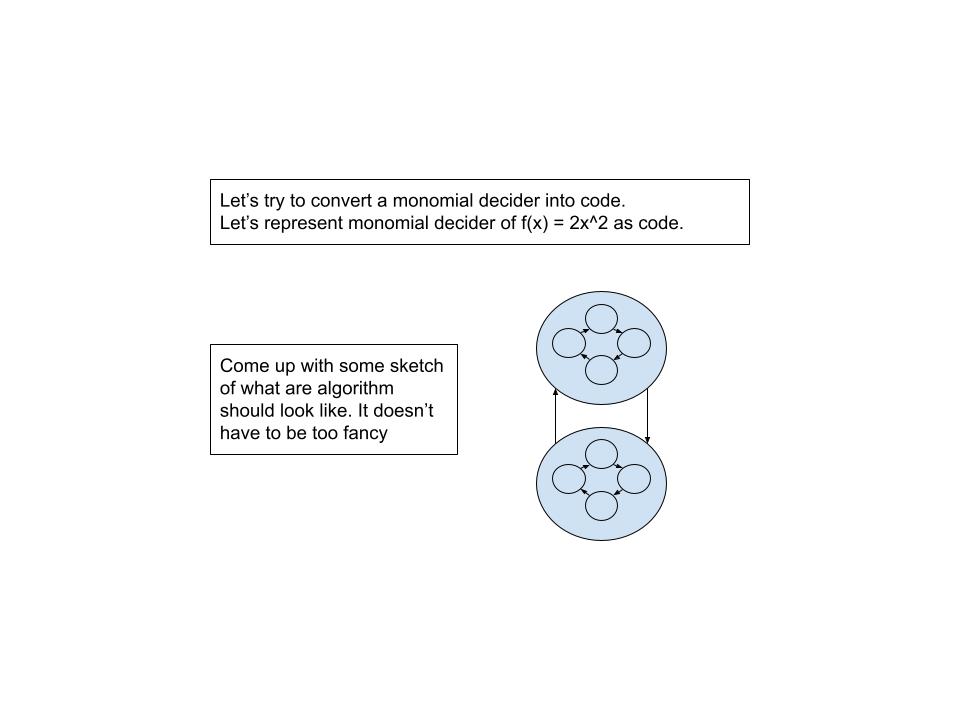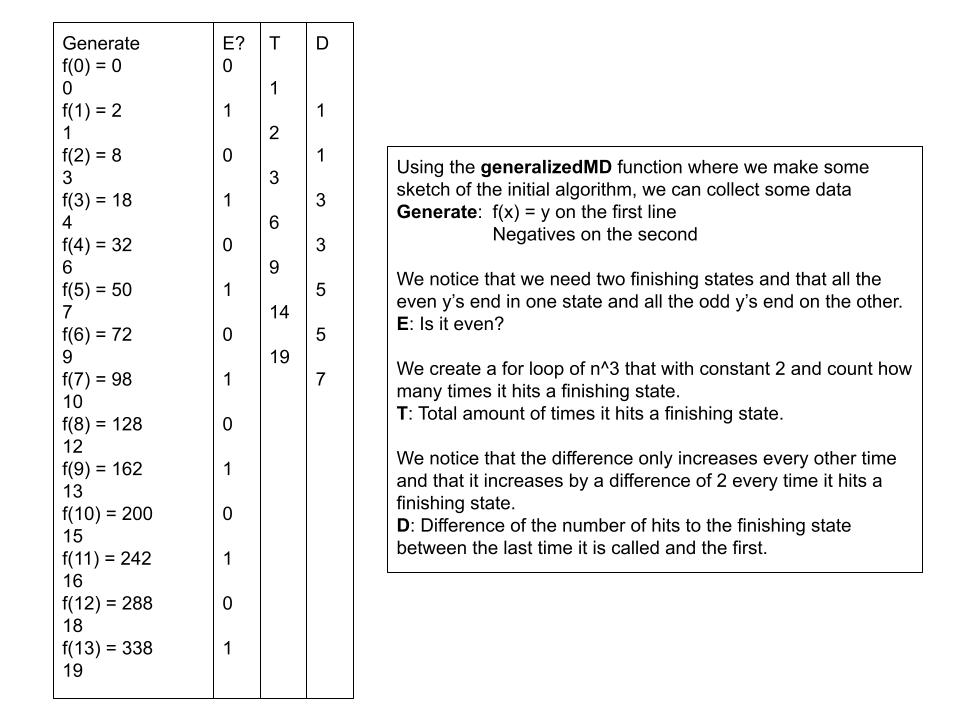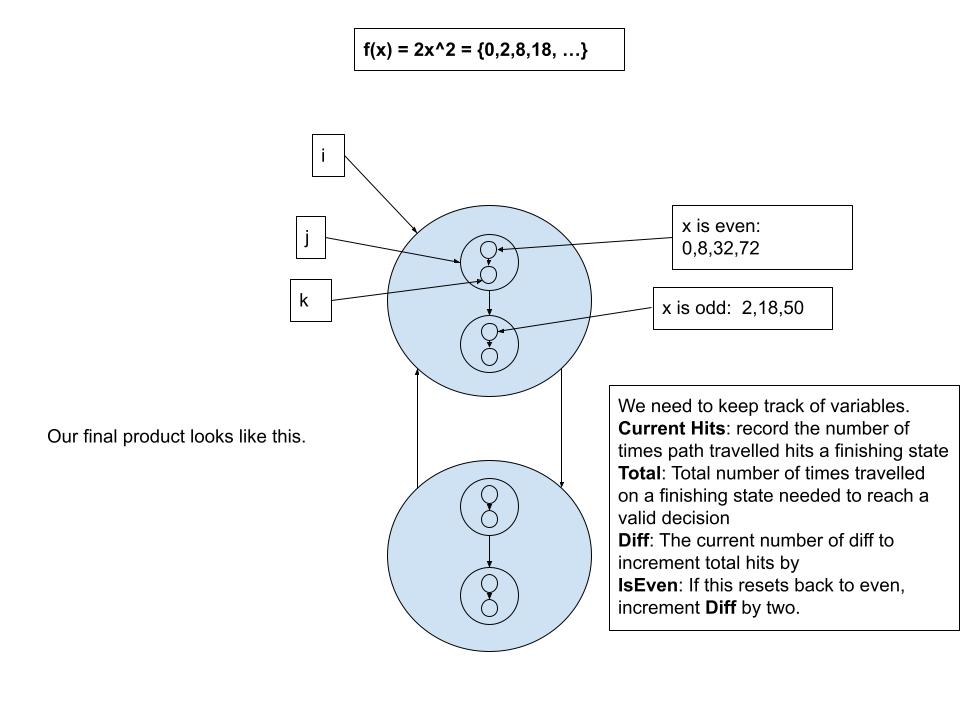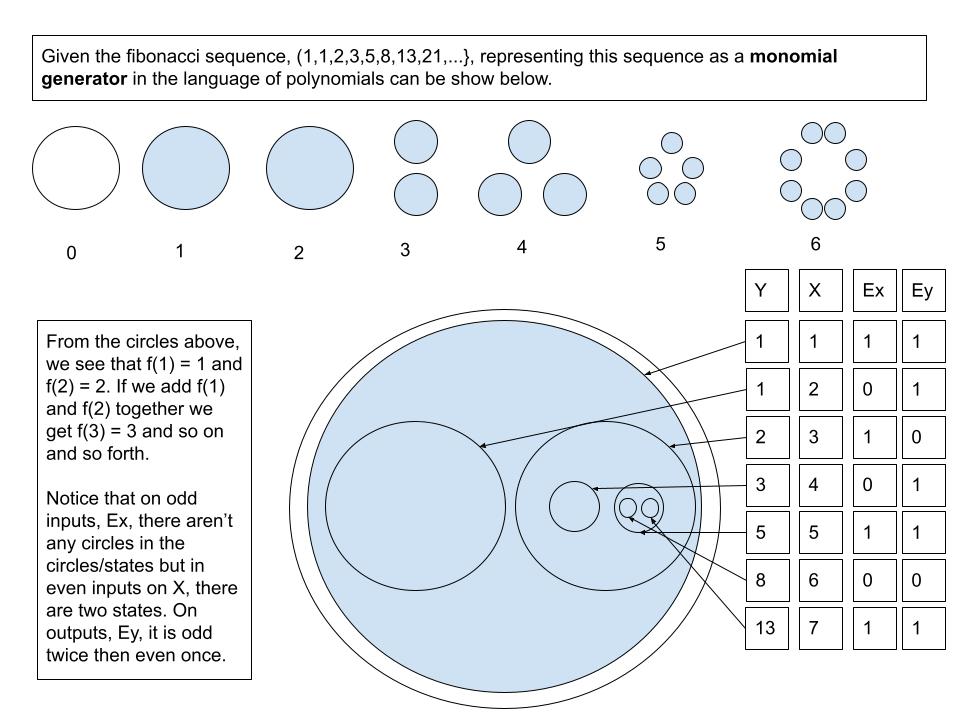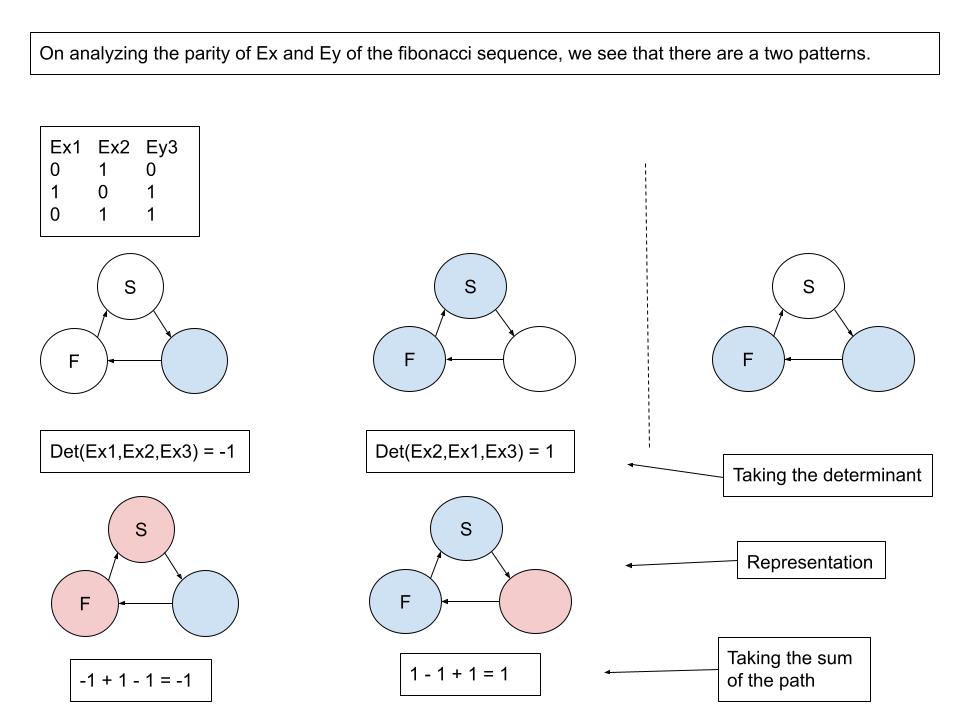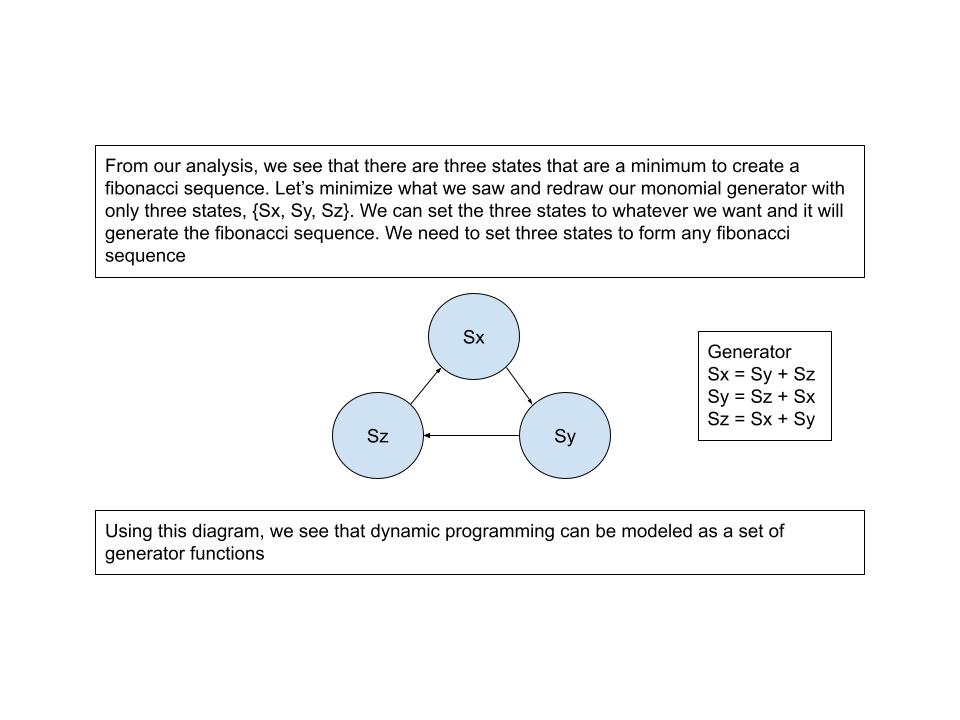This is part 2 of the article, "A Language of Polynomials", with concrete examples of how to use it including constructing the one way function using the picking function.
bool generalizedMD(int y)
{
if (y == 0)
{
return true;
}
var s = y;
while (s >= 0)
{
for (int i = 0; i < 2; i++)
{
for (int j = 0; j < 4; j++)
{
if (s == 0 && (j == 0 || j == 2) && i == 0)
{
return true;
}
else if (s < 0)
{
return false;
}
s -= 1;
}
}
}
return true;
}// Generates negatives from a general monomial decider represented as an algorithm so
// that we can collect data about the negatives
int[] Generator(int max)
{
int[] result = new int[max + 1];
int x = 0;
int negatives = 0;
int i = 0;
while (x < max + 1)
{
int num = 2 * (Convert.ToInt32(Math.Pow(x, 2)));
if (generalizedMD(i))
{
// A simple verifier
if (num == i)
{
Console.WriteLine(negatives);
Console.WriteLine("f(" + x + ") = " + i);
result[x] = i;
x++;
negatives = 0;
}
else
{
negatives++;
}
}
i++;
}
return result;
}// After getting some log results, we can construct a decider
bool MonomialDecider2xx(int y)
{
var total = 0;
var hits = 0;
var diff = 1;
var isEven = 0;
var s = 0;
while (s <= y)
{
for (int i = 0; i < 2; i++)
{
for (int j = 0; j < 2; j++)
{
for (int k = 0; k < 2; k++)
{
if ((i == 0)&&(j == 0 || j == 1)&&(k == 0))
{
if (hits == total)
{
if (s == y)
{
Console.WriteLine(s + ": Hits: " + total);
return true;
}
else if (s > y)
{
return false;
}
total += diff;
isEven++;
if (isEven % 3 == 2)
{
isEven = 0;
diff += 2;
}
}
hits++;
}
s++;
}
}
}
}
return false;
}Let's take apart the fibonacci sequence and try to find some patterns.
int fibonacci(int n)
{
if (n == 0)
{
return 0;
}
int y = 1;
int y1 = 1;
int y2 = 0;
for(int i = 1; i < n; i++)
{
y = y1 + y2;
y2 = y1;
y1 = y;
}
return y;
}Here's the log for the first 14 entries.
f( 0 ) = 0 Ex = 0 eY = 0
f( 1 ) = 1 Ex = 1 eY = 1
f( 2 ) = 1 Ex = 0 eY = 1
f( 3 ) = 2 Ex = 1 eY = 0
f( 4 ) = 3 Ex = 0 eY = 1
f( 5 ) = 5 Ex = 1 eY = 1
f( 6 ) = 8 Ex = 0 eY = 0
f( 7 ) = 13 Ex = 1 eY = 1
f( 8 ) = 21 Ex = 0 eY = 1
f( 9 ) = 34 Ex = 1 eY = 0
f( 10 ) = 55 Ex = 0 eY = 1
f( 11 ) = 89 Ex = 1 eY = 1
f( 12 ) = 144 Ex = 0 eY = 0
f( 13 ) = 233 Ex = 1 eY = 1
f( 14 ) = 377 Ex = 0 eY = 1
Fibonacci generator with the set of generator functions.
int fibonacciGenerator(int n)
{
int stateX = 0;
int stateY = 1;
int stateZ = 1;
int cycles = 0;
while (cycles <= n)
{
cycles++;
if (cycles > n)
{
return stateX;
}
stateX = stateY + stateZ;
Console.WriteLine("stateX: " + stateX + "\tstateY: " + stateY + "\tstateZ: " + stateY);
cycles++;
if (cycles > n)
{
return stateY;
}
stateY = stateX + stateZ;
Console.WriteLine("stateX: " + stateX + "\tstateY: " + stateY + "\tstateZ: " + stateY);
cycles++;
if (cycles > n)
{
return stateZ;
}
stateZ = stateX + stateY;
Console.WriteLine("stateX: " + stateX + "\tstateY: " + stateY + "\tstateZ: " + stateY);
}
return stateX;
}Given a sequence of length six, we can decide if it forms a valid fibonacci sequence.
The following is a log of calculations.
x1 = 144, y1 = 89, z1 = 55, x2 = 34, y2 = 21, z2 = 13
144 = 89 - 13 + 34 - 21 + 55 = 144
89 = 13 - 34 + 21 - 55 + 144 = 89
13 = 34 - 21 + 55 - 144 + 89 = 13
34 = 21 - 55 + 144 - 89 + 13 = 34
21 = 55 - 144 + 89 - 13 + 34 = 21
55 = 144 - 89 + 13 - 34 + 21 = 55
Ung, E. (2023). A Language of Polynomials (Version 1.0.0). https://github.com/ericung/languageofpolynomials
Hamming, R. W. (1986). Numerical methods for scientists and engineers. Courier Corporation.
Ung, E. (2023). Inferring Lindenmayer Systems. 1(1), 1–6. https://github.com/ericung/InferrenceSystems/blob/master/Resources/lindenmayer_systems.pdf
